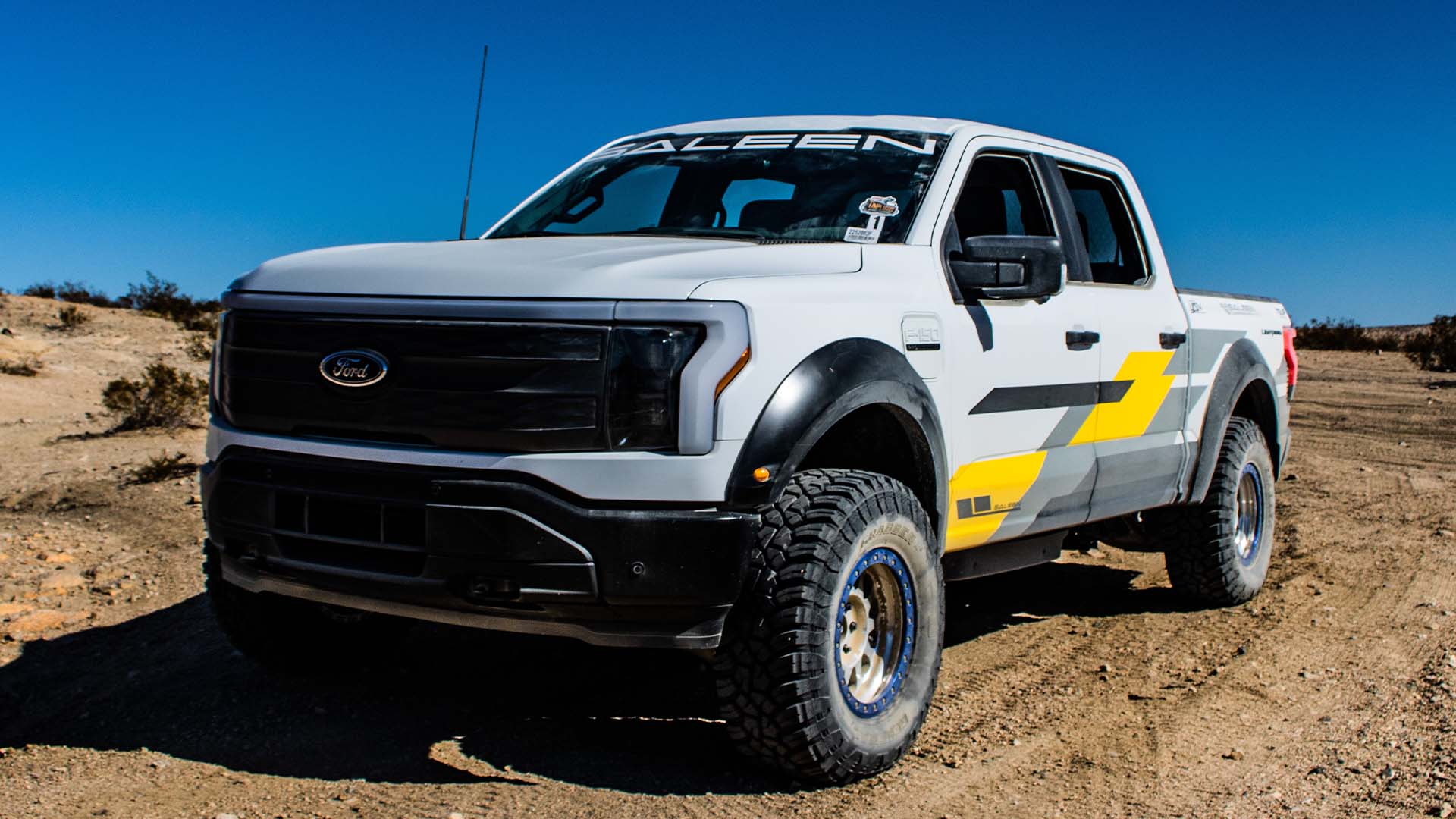

There’s a lot to be excited about with electric trucks. Most of the critiques you read online come from people who have never experienced the diesel-beating torque they pack. That said, those available right now pose a number of issues for those who’d want to treat them exactly like their internal-combustion counterparts. Towing range is a big one. But today, we’re talking lift kits, and how the time-honored practice of giving your truck a few extra inches on the cheap is about to get a lot harder with battery-powered pickups.
What’s the powertrain got to do with suspension modifiability? To make room for the rear drive motor, electric trucks like the Ford F-150 Lightning and forthcoming Chevy Silverado EV have ditched the typical solid rear axle and leaf springs in favor of four-wheel independent suspension. When you’re dealing with a multi-link setup like that, there’s more to it than just fitting taller springs or throwing in some bags. The suspension geometry has to remain in check both up front and out back; otherwise, your truck becomes unusable. And as the few shops who have modified an electric truck so far have found, it’s not a cheap problem to solve.


Of those who have tackled the F-150 Lightning’s suspension, TSW Off-Road out of central Texas inarguably did it best. They went way further than installing a lift kit, too, as they created an F-150 Lightning Raptor from scratch with Saleen. Some front suspension parts from the gas model carried over, but the rear was entirely redone to increase clearance and performance alike.
“A lot of people are under the assumption that these are all just bolt-on parts, which they’re not,” TSW Off-Road owner Alex Whitelaw told me. “To get it to work properly we had to do a lot as far as actual machining custom parts for the shocks and modifying the shocks, getting custom axles made, et cetera.”




Other companies in the truck aftermarket have to go through a similar process to develop their kits, but it’s not usually so involved. A four-inch lift may require a set of drop brackets and beefier cross members, but they can get by with including driveshaft spacers and selling them for $1,500. That’s not really an option with battery-powered trucks, whose electric motors either replace the differential or are located inside the hub. They have to be custom made.
“Everything essentially did bolt up, except there was a huge hurdle we had to get figured out, which was the front axles,” Whitelaw continued. “Because they’re electric motors, they’re not as wide as a traditional differential, we had to figure out the spline count, which ended up being the same as a Raptor. Which was great, we just had to get significantly longer axles made to make it work.”
Now, this is not an apples-to-apples comparison. The TSW Off-Road F-150 Lightning has “like $8,000 worth” of shocks on it, which is clearly different than the budget-friendly mods we’re focusing on here. Even still, there’s an immense amount of work that goes into simply altering the truck’s ride height. There’s a reason nobody is selling an F-150 Lightning lift kit more than a year after the EV hit the road—it’s costly, both for the manufacturer and the consumer.

This is why the concept of electrified solid axles is so appealing. Currently available solutions and others in the works allow for three-quarter- and one-ton trucks to retain their existing suspension setups, just with a solid axle that has a motor in the middle. For example, when I asked Magna if its battery-assisted eBeam live axle would be compatible with common suspension mods such as lift kits, the firm’s chief of electrification Mike Dowsett explained, “Yes. Anything that is/will be available for trucks now or in the future should work with eBeam as well, because as mentioned, it maintains the use of all OEM suspension systems.”
Systems like the Magna eBeam could be used in HD pickups, though the incoming batch of electric half-ton trucks all have independent rear suspension. Whether it’s the Ram 1500 REV or the Chevy Silverado EV, the story looks to be mostly the same as what we’re seeing with F-150 Lightnings. And to be clear, that’s not really a problem automakers care to address or even need to.
I asked the F-150 Lightning’s Vehicle Engineering Manager Dapo Adewusi at the truck’s press launch last May if Ford expected people to continue modifying them the same way they do gas F-150s. He responded, “That, I can’t answer. I’m sure customers are going to do what they want with them—once you buy it, it’s yours.” That loosely translates to, “Not our problem.”

There are other kinks to work out in the meantime, like the elephant in the room that is range. When you’re only getting 250 miles or so from a stock electric truck on a good day, adding parts that will reduce that number significantly isn’t so appealing. Manufacturers are working on new batteries with more energy density that charge faster, while others—really just Ram—is working on an internal-combustion range extender. But until those come out, we’re more or less stuck with what we have now.
Whitelaw is confident, however, that modifying will still be a crucial part of truck culture in the electric era:
“It’s just like when fuel injection came out in the ’80s. It was a whole new thing. All of a sudden, you have improvements on it, and then you have aftermarket support and tuning. It’ll eventually get to a place where people accept it and start making parts for it just like we have with gas vehicles.”

Here’s to hoping he’s right, and at a price point that’s accessible for your hometown pickup truck driver.
Got a tip or question for the author? Contact them directly: caleb@thedrive.com